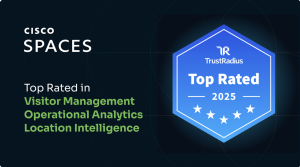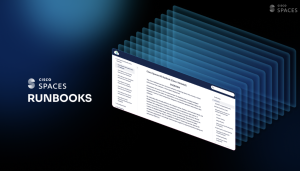
Last month, Disney’s CEO, Bob Iger announced that all employees were to return to work for at least four days a week*. He wrote in a memo, “In a creative business like ours, nothing can replace the ability to connect, observe and create with peers.” Disney is just one of the many high-profile companies trending towards a return-to-work referendum.
On the other hand, business leaders like Amazon’s Andy Jazzy says he’s comfortable with many employees working from home, so long as they can come to the office when needed. IBM’s CEO, Arvind Krishna said he doesn’t think it’ll ever cross 60 per cent of office workers returning to work full-time**. Arvind also signed the “IBM Work from Home Pledge,” which supports things like “flexibility for personal needs” and “not camera ready time.”
While there isn’t a consensus amongst business leaders on the topic, they’d all agree that we’ve reached a unique inflection point that impacts nearly every business. One that crosses over from business to individuals’ personal lives.
It begs the question, how best to survive and thrive in a hybrid workplace?
Work life balance
A hybrid employee gets more freedom of choice. Commuting during rush hour traffic or driving a child to school. Scheduling a time to meet at the office or jumping on a quick WebEx call. Writing up a report at 10 AM, or at 10 PM after things have settled down at home. Remote working during the pandemic proved that team members could be productive and that technologies exist that can aid in the process. With employees feeling empowered, and businesses trying to create collaborative work environments conducive to creativity, problem solving, growth and leadership building, companies have to strike a balance between mandating return to work, hybrid work, or full remote workforce policies.
Productivity & the hybrid worker
The metrics historically used to measure an individual’s effectiveness and productivity, often included a person’s presence in the office. When they reach the office, their appearance, enthusiasm, engagement with others, etc. In many ways, the move to a remote or hybrid workforce showcased the effectiveness of all team members – the extroverts and the introverts. Output and productivity became easier to attribute to an individual or team. In a sense, remote work has leveled the playing field. An effectively managed hybrid work environment, coupled with the right tools, can create a productive and inspiring workplace. Some of the ways to ensure this are to…
- Configure the workspace to meet the needs of the organization. This includes reconfiguring space and adjusting facilities based on the actual daily occupancy and usage, as opposed to the total number of employees.
- Include technologies such as Cisco’s Smart Workspaces and WebEx, that promote productivity, collaboration and efficiency.
- Implement strategies that address the human elements and concerns, thereby making going to the office comfortable, safe, engaging and productive.
The hybrid manager
One of the main objectives of a hybrid manager is to stimulate new thinking, improve collaboration and expose team members to tools and methodologies that enhance focus and problem solving. Effective offsite meetings can be a step in this direction. These often include best practices to minimize distractions or individuals using the time to perform less team-centric activities like checking email or leaving to answer a call. The new hybrid work environment tasks leaders with rethinking collaboration and improving productivity of team members. They should be able to recall effective meetings and management approaches. Tips to be an effective hybrid manager:
- Pre-plan onsite team meetings and desired outcomes
- Include working sessions for the team to collaborate
- Focus on problems, strategies and initiatives that benefit from team participation
- Promote real-time, collective decision-making
- Create activities that engage with the remote worker
A $1.00 office or $1.50 smart workspace?
“Hybrid workplaces are significantly different from regular offices,” says Cisco Spaces’ VP of Product, Rajesh Reddy. He poses an interesting question, “Are you going back to work at a $1 office, or the $1.50 smart workspace?” Referring to the cost per square foot that companies spend on technology, maintenance and amenities for employees each year. His point is that the $1.50 Smart Workspace should reflect the needs of the new workforce – a workforce likely working in a smaller area as companies shed 20 to 50 per cent of their real estate portfolios. It is through these consolidations and reduction in real estate cost, that funds are becoming available to reinvent and redesign smarter workspaces.
Organizations have begun utilizing historical and real-time occupancy data to determine the correct ratios of dedicated, shared, hotdesk, small collaborative spaces and meeting rooms. They use the same data to improve facilities management, energy management and operational efficiency. Each floor in the building can include intuitive digital displays that provide vital environmental and air quality metrics and display the building, room and even desk occupancy on 3D maps. Upon arrival, employees can book a space from the digital display. Compare this to pre-pandemic, when fewer meeting rooms, managed by specific departments, weren’t available to support spontaneous group collaboration.
Going back to the office will also require employee happiness triggers. The $1.50 Smart Workspace considers the importance of human convenience, choice and safety. The quality and type of the food and snacks served, noise and environmental factors, onsite amenities (break rooms, health and wellness and entertainment areas) and ensuring a clean space are vital. If you’re a sports fan or want to keep up on a news story, having access to streaming television in the break room or cafeteria offers an opportunity to disconnect or check in on things similar to what an employee might do at the home office.
On a recent visit to Cisco’s SF office, I stepped out of a meeting and noticed a short line of people waiting for coffee. Ahead of the line were two baristas serving premium specialty coffees. I joined the line and can tell you that everyone was smiling and everyone walking by was smiling at us – a simple, yet brilliant way to provide a unique and memorable in-office experience.
For leadership, the $1.50 Smart Workplace creates a unique opportunity to rethink the digital workplace of the future. Organizations that successfully balance technology to deliver on corporate business objectives of growth, sustainability and efficiency, with tools that promote collaboration and productivity in an engaging and thoughtful workspace, will be well positioned to thrive in a hybrid work environment.
For more on how you can accelerate your hybrid work strategy, visit https://spaces.cisco.com/smart-workspaces/
Sources:
*https://www.forbes.com/sites/qai/2023/01/18/disney-ceo-bob-iger-requires-hybrid-staff-to-return-to-the-office-at-least-four-days-a-weekheres-how-employees-and-investors-have-responded/?sh=3c576a2c2322
**Only 20% of U.S. workers in office three days or more: IBM CEO (cnbc.com)




